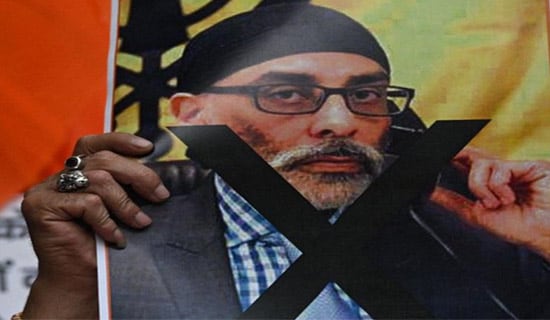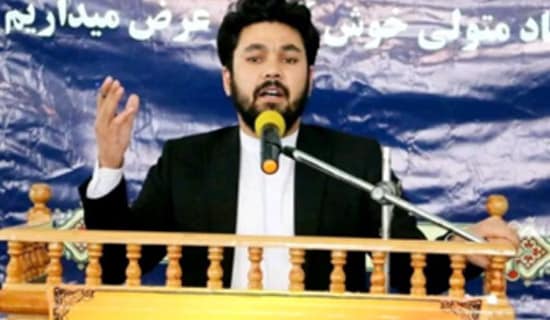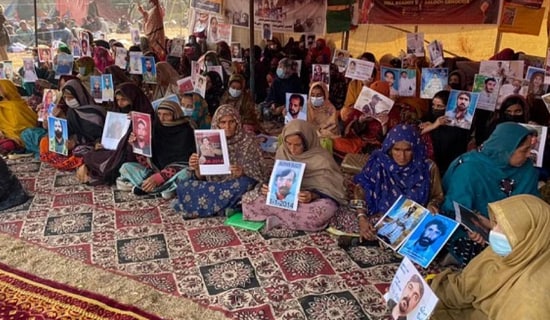Islamic State in Iraq Praises Attack on Brown & Root Condor in Algeria
On December 13, 2006, various Islamist websites posted a communiqué by the Islamic State in Iraq, praising the December 10, 2006 attack on a bus in Bouchaoui, Algeria, which was carried out by the Salafist Group for Preaching and Combat (GSPC). [1] "You have earned the right to be descendants of Tariq Ibn Ziyad [the Berber Muslim and Umayyad general who led the 711 C.E. conquest of Spain]," says the message. "Proceed in your glorious and victorious [path]. We ask Allah to allow you to dominate the apostates in Algeria and to establish an Islamic state there... We call upon all Muslims to target the Crusaders' interests in every Muslim land, in order to avenge what is being inflicted upon your brothers by the Crusaders in Iraq, Afghanistan, and other Islamic countries."
Video Titled "The Expedition of Shaykh 'Umar Hadid"
On December 10, 2006 Islamist websites posted an 80-minute film titled "The Expedition of Shaykh 'Umar Hadid." The film is from the Al-Qaeda Organization in Iraq's Media Department, and was distributed by Dar Al-Tibyan; the logos of these two organizations appear in the first scenes in the film. The film is subtitled in English and in several parts. The following is a summary:
The first part is dedicated to "all the [Sunni] prisoners in the prisons of the infidels and the Arab regimes" and, in particular, to four translators from Al-Tibyan who were arrested by Arab regimes. The film describes the prisoners' travails and encourages them.
The second section shows a series of terror attacks, including a suicide bombing at Al-Radhwaniyya, a car bombing aimed at police patrol, a suicide bombing at Tel 'Afar, a suicide bombing at Al-Ramadi (in which, according to the film, over 20 U.S. troops were killed), a suicide bombing at Abu Ghraib (in which, again according to the film, over 14 U.S. troops were killed), a suicide bombing at the police station in Ba'quba where 28 volunteers were killed, and others.
SUPPORT OUR WORK

The next part of the film deals with the Martyrdom Battalion (Katibat Al-Istishhadiyyin), also known as The Bara' Bin Malik Battalion, whose fighters are described as "the best sons of this land." The film shows martyrs reading out their last wills, followed by scenes of terror attacks. The narrator says: "In response to the operations of this blessed jihad, the enemy began to use new methods… and to conduct military attacks… in the course of which it perpetrated the most despicable kind of crimes, by bombing civilian areas with warplanes and artillery. Afterwards they released the dogs of what is called 'the Iraqi security forces'… and arrested men, women, and even children."
The last and principal section in the film is titled "The Sheikh Omar Hadid Raid." The film's narrator says that following the operations by the Americans and the Iraqi security forces, the Shura Council of the Mujahideen in Iraq convened and decided to carry out an attack in Baghdad, which they named "The Sheikh Omar Hadid Raid." The film describes Sheikh Omar Hadid as a commander who was resilient in the face of oppression and struck out at the "Crusaders" just as he struck out at the Ba'th before them, until he was hunted down and killed in the second battle of Falluja in the Muslim year 1426 (2005).
According to the narrator, the Sheikh Omar Al-Hadid Raid included more than 30 suicide attacks in Baghdad and its environs "against enemy convoys, bases, checkpoints, and patrols." The narrator accuses the enemy of detonating a bus bomb in an open-air market in order to defame the jihad fighters and cover up its own losses. Then the film shows shots of future martyrs who came from various Arab countries - Iraq, Palestine, Tunisia, Saudi Arabia, Libya, and Syria - and who all express their ardent desire to become martyrs and call on all Muslims to enlist in the jihad and be reunited in Paradise.
Next shown are the suicide attacks carried out by these martyrs, and portions of their last wills. Then the narrator emphasizes that this is not a staged production, and that the heroes of the film were all ordinary people leading ordinary lives, but that they were opposed to the humiliation of the Islamic nation and were pained by its weakness, and thus decided to set out to wage jihad after they understood that this was the only way to bring about Islam's victory.
Interspersed throughout the film are extracts from speeches by Abu Mus'ab Al-Zarqawi and Osama bin Laden urging Muslims to wage jihad against the injustices of the "Crusader enemy." The film ends with bin Laden citing a hadith explaining that in Islam, action that goes hand in hand with knowledge is superior to knowledge alone.
Since the film contains many disturbing images, MEMRI provides only an edited version of the film. To view the film, go to http://switch3.castup.net/cunet/gm.asp?ClipMediaID=379550&ak=null.
[1] See December 12, 2006 entry on TheMEMRIBlog.org: "The Salafist Group for Preaching and Combat (GSPC) Claims Responsibility for the Attack on Brown & Root Condor," December 13, 2006, http://www.thememriblog.org/blog_personal/en/144.htm.




